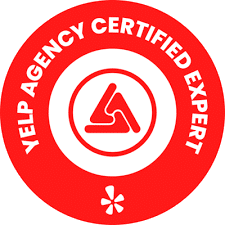In today’s digital age, having a website is essential for any business or individual looking to establish a strong online presence. However, simply having a website is not enough; it is important to develop your website design properly to ensure that it is effective and engaging for your target audience. In this article, we will explore the steps you can take to develop your website design properly, with a focus on using search engine projects for website design.
Step 1: Define Your Website Goals
Before you begin designing your website, it is important to define your website goals. What is the purpose of your website? What do you want to achieve through your website? Is your goal to promote your products or services, generate leads, build your brand, or provide information to your audience? Once you have a clear understanding of your website goals, you can design your website with those goals in mind.
Step 2: Identify Your Target Audience
In addition to defining your website goals, it is important to identify your target audience. Who is your ideal customer or website visitor? What are their needs, interests, and preferences? By understanding your target audience, you can design your website to meet their needs and preferences, making it more engaging and effective.
Step 3: Choose Your Website Platform
There are many website platforms available, each with its advantages and disadvantages. Some popular website platforms include WordPress, Wix, Squarespace, and Shopify. When choosing your website platform, consider factors such as ease of use, customization options, and scalability. You should also consider the specific features and functionality you need for your websites, such as e-commerce functionality or a blog.
Step 4: Select Your Website Design
Once you have chosen your website platform, it is time to select your website design. Your website design should reflect your brand and align with your website goals and target audience. You can choose from pre-designed website templates or create a custom design from scratch. When designing your website, consider factors such as color scheme, typography, layout, and imagery.
Step 5: Develop Your Website Content
After designing your website, it is time to develop your website content. Your website content should be engaging, informative, and relevant to your target audience. You should also optimize your website content for search engines by incorporating relevant keywords and meta descriptions. Additionally, consider adding multimedia content such as images, videos, and infographics to make your website more engaging.
Step 6: Test and Launch Your Website
Before launching your website, it is important to test it thoroughly to ensure that it is functional and user-friendly. Test your website on different devices and browsers to ensure that it is responsive and accessible. You should also test your website’s speed and performance to ensure that it loads quickly and does not have any performance issues. Once you have tested your website, you can launch it and begin promoting it to your target audience.
Conclusion
Developing your website design properly is essential for creating a strong online presence and engaging your target audience. By following the steps outlined in this article, you can design a website that reflects your brand, meets your website goals, and engages your target audience. Additionally, by using Search Engine Projects for website design, you can ensure that your website is optimized for search engines, making it more visible and accessible to your target audience. With a well-designed and optimized website, you can establish a strong online presence and achieve your website goals.














